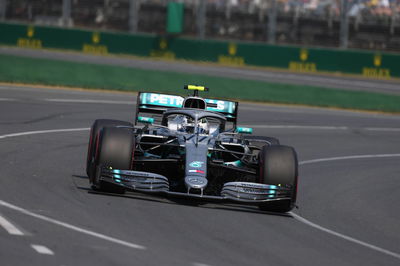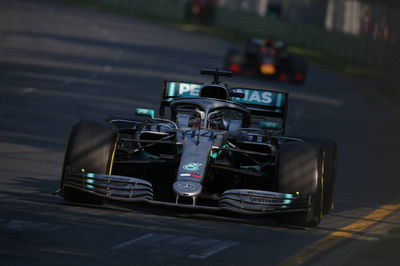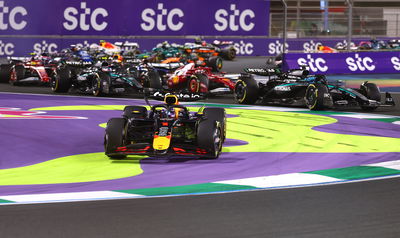Mercedes explains 'risk versus reward' in fastest lap strategy
Mercedes says a “risk versus reward” factor was behind the decision not to pit Valtteri Bottas for fresh tyres during the closing stages of the Australian Grand Prix.
In a post-race debrief video answering fans’ questions, chief strategist James Vowles said the subject of going for the new fastest lap bonus point was “hotly debated” within Mercedes.

Mercedes says a “risk versus reward” factor was behind the decision not to pit Valtteri Bottas for fresh tyres during the closing stages of the Australian Grand Prix.
In a post-race debrief video answering fans’ questions, chief strategist James Vowles said the subject of going for the new fastest lap bonus point was “hotly debated” within Mercedes.
With a comfortable buffer over teammate Lewis Hamilton, Bottas had asked to stop for fresh rubber in a bid to seal the fastest lap point, and while his request was declined, he was still able to score the additional point on offer.
“The facts are there are 21 races, 21 points, which is nearly a race wins’ worth, and you can’t let your rivals run away with that,” Vowles explained. “This could be a close-fought season and that may make all the difference.
“But it is risk versus reward - if, for example, you decide to do an extra pit stop for the sole purpose of being able to get the fastest lap of the race, there is risk involved in that. Perhaps you don’t get a wheel connected to the car correctly and the car goes out, and it’s a DNF.
“Perhaps, the driver accidentally crosses the white line on entry or exit. Either one of those has huge repercussions and all of a sudden your race wins’ worth of points is meaningless relative to the one you were going for.
“The converse is again at the end of the race, asking a driver to push and extract performance for the fastest lap of the race isn’t without risk. They can go off the track, they can make a mistake and they can risk the car.”
Mercedes boss Toto Wolff revealed after the race that Bottas and his new race engineer Riccardo Musconi had ignored his pre-race instructions not to take the risk of going for the fastest lap point.
“Both Valtteri and Lewis did a great job managing the tyres and just trying to keep as much rubber available on them as they could, such that they could go for the fastest lap at the end of the race,” Vowles added.
“Valtteri ultimately had tyres in a slightly better condition and didn’t have the floor damage that Lewis did, and did a fantastic job scoring the maximum number of points available to him that race.”












